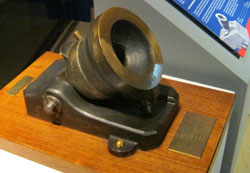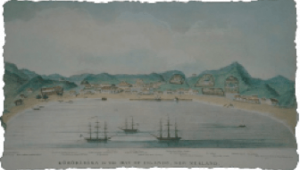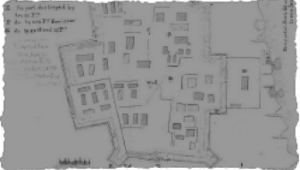
Mortars and Howitzers



Along with the 32-pounder cannon, there were four 5 ½ inch mortars1 at the main battery. The mortars were small and portable, basically, a stubby bronze tube mounted on a wooden platform. Used in European sieges since the 17th century, they launched bombshells at a high angle, ignited by a burning fuse.

5 1/2 Mortar mounted on a wooden platform.
Photo: Phil Cregeen
Mortars were commonly used in siege-type situation, because they could fling projectiles up and over defensive walls and down onto the people sheltering behind. Open-top trenches were no defence against mortar shells, but the under-ground shelters within Ruapekapeka pā did offer Kawiti and his men protection.
Howitzers are somewhat similar to mortars, but the barrel is much longer. The bombshells are fired at a lower angle and follow a flatter trajectory. There were two 12-pounder howitzers at Ruapekapeka, one at the main camp and the other at the advanced gun battery. Accuracy was a problem with howitzers and mortars alike. The range of the shell was determined by the powder charge, and it took a very skilled artillerist to determine exactly how much powder was required.
1 These would have been either “Mann” mortars or “Royal” mortars. “Coehorn” mortars are 4 ½ inches (John Osborne, pers.com. July 2013).



